With Scott Ellis about irezumi
February 9, 2022
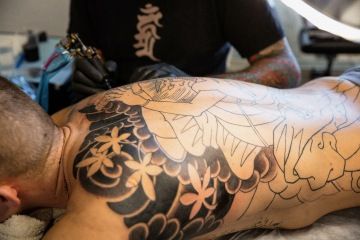
"Authentic Japanese tattoo, that's my path, to make it look really traditional."
"Simple, bold, no details, not too many colours. It's just super powerful for me. It's a tattoo you can have for 50 years and it still looks beautiful. It's a real Traditional Japanese tattoo, in the line of Yokosuka Horihide, an old master who worked in Japan. He tattooed for around 60 years and died in his 80’s. I spent a lot of time with my friend Rico Daruma, a friend of Horihide and got inspired by him a lot. In the very beginning I was influenced by Philip Leu and other European guys and that's why I came to Prague quickly, after just one and half years tattooing in Austin, where my studio is.
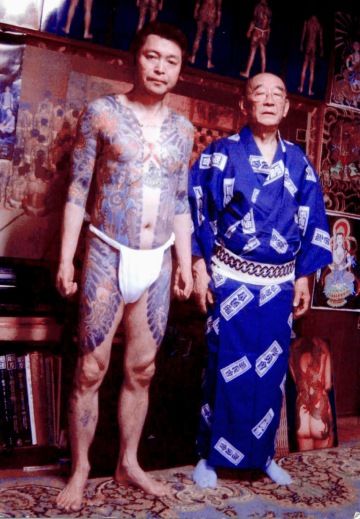
Yokosuka Horihide
I'm trying to achieve an authentic look with the tattoo, and I try to forget about all the fancy drawing, extra details and colors. I try to just take all that extra stuff away and have an authentic, traditional appearance.
I have watched the traditional tebori technique many times, but have never done it. It's totally different style of work. Sure you can see the difference, between machine and tebori, usually the outlines are more rough with tebori. A lot of the tebori guys use a machine for the outlines nowadays, and do the color and shading by tebori. I like the slightly rougher look of the tebori style how It really looks hand made.
I started in the Japanese style in 2000 but was first influenced by European guys, it was more illustrated, more fancy details, more colours etc. Slowly over the years I started to move in a more traditional Japanese direction, and then In 2013 I went to get tattoo by my friend Rico Daruma, watched the way he worked, spent some time with him and his wife, Shion. I saw their studio environment and paintings and I was really inspired to focus on that style. Since then, I’m trying to make tattoos that looks Japanese. I'm not tryin' to so much have my own style, I'm tryin’ to make it look like traditional Japanese tattoo, as opposed to it looking obvious that Scott Ellis did it.
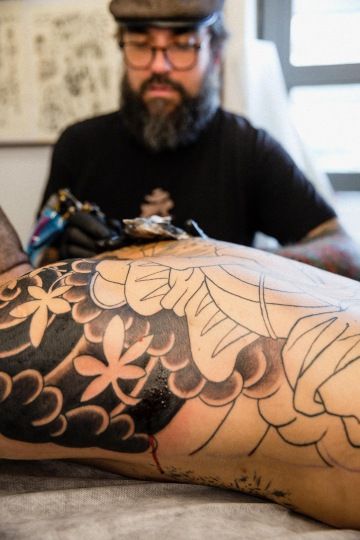
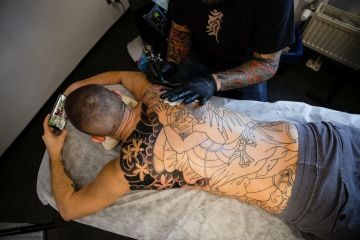
I used to be afraid to draw directly on the skin, because I wanted everything to be perfect. So I used to made stencils, but I found for me It almost never fit the body properly. For instance, when you draw a samurai, the proportions you'd draw on paper are not the same as on the human body. It has to go down to the back of the legs and you are on this 3D form so the proportions change. I drew on the backgrounds for many years but would make a stencil of the main image. Several years ago, I began doing 100% freehand tattoos, and I saw immediate improvement. The body tells you where to put things, you can see it on the body. You see what's gonna look good. For instance, which way the body of a snake should flow on the arm is dictated by the person’s muscles and curves. The body tells you what to do if you pay attention. But you also have to be prepared, practise a lot and be comfortable with the images. If you don't know how to draw dragon on paper you will probably not draw a dragon very well on the body.
So what I do is I practise a lot in my sketch book, I prepare for the client, decide the way the tattoo’s gonna look. I make the basic composition and then I focus on, for instance if it's a dragon like today, I'm gonna draw it's face few times, so I can really get the personality that I want. Also there are many ways to draw the feet so I work those details out on paper when I make the sketches, and I'm ready when the customer comes to make the actual drawing on the body with the brush.
This is a lifelong practice for me. I try to remember that. My goal is to improve a little with each project. Part of drawing on the skin has helped me be ok with not controlling 100% how everything is going to look in advance, and being ok with the small imperfections that make the work unique and human. Anyway, I am the only one who sees these imperfections, so it’s just part of my process to learn and improve."
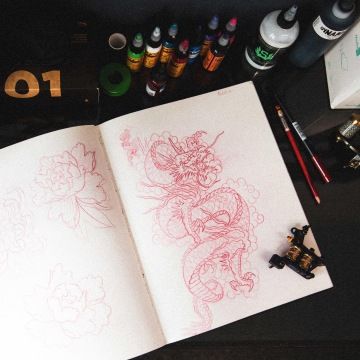
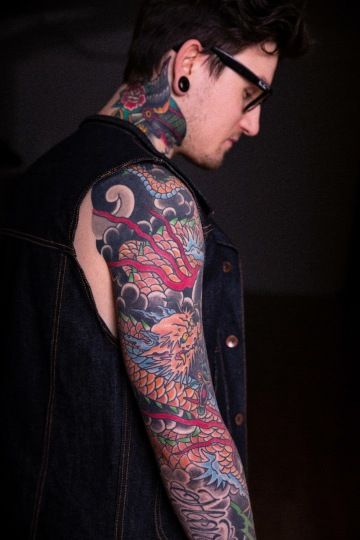
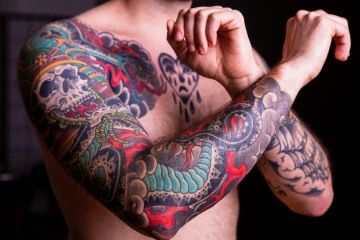
half sleeve and chest : 8 hours / full arm : 15-20 hours 3-5 sessions / backpiece: 40 hours
Text & foto: TerkaTetris / archive tattoolife.com
See more at Scottellistattoo